- Home
- Diane Ackerman
A Natural History of Love Page 2
A Natural History of Love Read online
Page 2
Remember the feeling of an elevator falling in your chest when you said good-bye to a loved one? Parting is more than sweet sorrow, it pulls you apart when you are glued together. It feels like hunger pains, and we use the same word, pang. Perhaps this is why Cupid is depicted with a quiver of arrows, because at times love feels like being pierced in the chest. It is a wholesome violence. Common as child birth, love seems rare nonetheless, always catches one by surprise, and cannot be taught. Each child rediscovers it, each couple redefines it, each parent reinvents it. People search for love as if it were a city lost beneath the desert dunes, where pleasure is the law, the streets are lined with brocade cushions, and the sun never sets.
If it’s so obvious and popular, then what is love? I began researching this book because I had many questions, not because I knew at the outset what answers I might find. Like most people, I believed what I had been told: that the idea of love was invented by the Greeks, and romantic love began in the Middle Ages. I know now how misguided such hearsay is. We can find romantic love in the earliest writings of our kind. Much of the vocabulary of love, and the imagery lovers use, has not changed for thousands of years. Why do the same images come to mind when people describe their romantic feelings? Custom, culture, and tastes vary, but not love itself, not the essence of the emotion.
“Animal attraction,” we sometimes call it. After a passionate encounter, a woman might describe her bedmate as “a real animal” and mean it as a sexy compliment. If she says it to his face, she might toss in a mock growl for good measure, and that’s usually enough to start festivities all over again. In fact, animals have much to teach us about our own romantic habits. There are many parallels. Male animals often give the equivalent of engagement rings, females often check a male’s bank balance, and “modesty” or “playing coy” is as much a trump card for female birds or insects or reptiles as for humans. In this book, I sometimes refer to the mating habits of other animals, although not at great length because I’ve written on that subject in detail in other books. I think it would be a mistake to repeat—out of context and in different language—what I have struggled so hard to say elsewhere (with one exception: my thoughts about kissing.).
For the history section of this book, I consider a mideastern culture (Egypt), where we find the earliest writings about love, and then I explore love’s changing nature in the ancient and modern western world, so that I can follow a single thread as far as possible.
However, when it comes to the history of love, one must keep in mind that we know more about the love lives of the fairly well-to-do than about the love lives of common people, who had little leisure, and lived in caves or small rooms, sharing their beds with many people; their romantic lives would have been distinctly different from those blessed with spare time and privacy. The most remarkable time for the poor might have been that newlywed period, perhaps only nine months long, when they were alone. Happily, love is a peasant emotion and thrives as well in stables as in palaces.
It’s tempting to think of love as a progression, from ignorance toward the refined light of reason, but that would be a mistake. The history of love is not a ladder we climb rung by rung leaving previous rungs below. Human history is not a journey across a landscape, in the course of which we leave one town behind as we approach another. Nomads constantly on the move, we carry everything with us, all we possess. We carry the seeds and nails and remembered hardships of everywhere we have lived, the beliefs and hurts and bones of every ancestor. Our baggage is heavy. We can’t bear to part with anything that ever made us human. The way we love in the twentieth century is as much an accumulation of past sentiments as a response to modern life.
When I began researching this book, I scouted libraries for reputable studies of love and discovered how little serious research had been done. For example, the microfiche Human Relations Area File, an anthropological database representing over 300 cultures around the world, includes entries on everything from divorce to nose ornaments. It has no separate main category or code for love. Why has there been so little research into love? Surely it’s not just that love seems a subjective field with unprovable assumptions, too emotional for social scientists to take seriously (and receive funding for). After all, there are countless studies on war, hate, crime, prejudice, and so on. Social scientists prefer to study negative behaviors and emotions. Perhaps, they don’t feel as comfortable studying love per se. I add that “per se” because they are studying love—often they’re studying what happens when love is deficient, thwarted, warped, or absent.
Why did love evolve? How does it make sense in evolutionary terms? What is the psychology of love? Are erotic and nonerotic love essentially the same? Who is naturally more loving, a man or a woman? What is mother love? How does love affect our health? Do men and women have different sexual agendas? What is the relationship between lack of love and crime? What is the chemistry of love? Are we monogamous by nature, or were we born to cheat? How has the idea of love changed through the ages? Do aphrodisiacs really exist? Do animals feel love? What are some of love’s customs and extravagances?
We have the great fortune to live on a planet abounding with humans, plants, and animals; and I often marvel at the strange tasks evolution sets them. Of all the errands life seems to be running, of all the mysteries that enchant us, love is my favorite.
EGYPT
HISTORY’S PARAMOUR, THE SERPENT QUEEN
Cleopatra. Her name conjures up an Orient of mystery and romance. Thousands of years after her death, she still rules men’s fantasies and sparks women’s envy. We may sigh over Helen of Troy as the incarnation of feminine beauty, but we envy Cleopatra for an allure so elemental that she could sail into any man’s life and steal his heart. We picture her as a human aphrodisiac, a woman redolent with sensuality. That part of us still a child, which secretly trusts in magic, wants to believe that her wand-like power could bewitch one Caesar after another. Her legend tells us more about our own fantasies and yearnings than about the woman herself.
Cleopatra was born in Egypt in 69 B.C., the daughter of King Ptolemy XII, who was descended from a Macedonian general. Although her mother isn’t known, royal marriages between brother and sister were usual, and that would make Cleopatra mainly Greek. However, a purely incestuous line of descent would have produced frail and feebleminded offspring, whereas freshening the gene pool by only one indiscretion would be enough to ensure some genetic variety and healthy offspring. In all likelihood, royal women occasionally became pregnant by outsiders. So it’s safest to say that Cleopatra was mainly Greek, but she may have been a mélange of other ancestries as well.
Although writers and artists of her time described her in much detail, those accounts have vanished. What survives is Plutarch’s biography, written two hundred years later, based on the memoirs of people who saw or met her. They reported that she was not pretty but very charming, with a strong personality and a musical voice. Her portrait on Egyptian coins minted during her reign was bound to have been flattering; no artist would have wanted to insult the queen, and she wouldn’t have wished her subjects to carry around unflattering likenesses of her. The woman whose profile we find in relief on those coins has a large hooked nose, bony face, sharply pointed chin, big eyes, and a rather narrow forehead. Second-guessing beauty in ancient days in distant lands is not a game for the faint of heart.
What she had was style. Glamorous and dramatic, Cleopatra was a one-woman pageant. Silks and perfumes, veils and precious stones, exotic makeup and ornate coiffures, fawning slaves and sinewy dancers—all were part of her repertoire and retinue. When she wanted to impress her own people or visiting Romans, she produced elaborate ceremonies on land and sea, wore opulent clothes, knew just what tableau to stage. She might have written stirring speeches instead, and indeed some books have been credited to her, but most of her people were illiterate, and she needed to express herself in a way that would transcend the written word, and also not require much translation. S
he chose a dramatic, full-body hieroglyphics, in which nothing was spoken but much was understood. Plutarch reports that, when she sailed to Tarsus to meet Antony, she arrived on a scented barge of purple and gold, dressed as Aphrodite (the Greek goddess of sexual love), with boys as cupids fanning her.
Her rowers caressed the water with oars of silver which dipped in time to the music of the flute, accompanied by pipes and lutes…. Instead of a crew the barge was lined with the most beautiful of her waiting women attired as Nereids and Graces, some at the rudders, others at the tackles of the sails, and all the while an indescribably rich perfume, exhaled from innumerable censers, was wafted from the vessel to the river banks.
Sometimes merged with Isis, Egypt’s patron goddess, Aphrodite was an important goddess to the city of Tarsus, whose religious history told of her union with an eastern god. Imagine the wildness of the scene, when the people of Tarsus beheld their goddess arriving in clouds of perfume. They flocked to the harbor to welcome and adore her. Not a bad entrance. Antony would have been impressed by the opulence and grandeur at Cleopatra’s command, and he would have gotten the message that their union was written in the stars.
We don’t remember her in Egyptian terms, as a powerful and able monarch, whose people valued and even worshiped her. Instead, we accept the Roman propaganda of her as a depraved seductress, the ruin of great men. This should not surprise us. Rome was her enemy, and it was in Rome’s best interest to vilify her during wartime. If she wasn’t depicted as a beautiful, debauched, hot-blooded enchantress, how could one explain Roman generals joining forces with her?
Was she depraved? Apparently she did contrive to kill her siblings in order to be queen. Did she have many lovers? She is reported to have taxed some men dearly for spending a single night with her. After lovemaking, she sometimes had a man killed. Because she was a goddess, any lover became a demigod in her arms. Perhaps she felt well rid of certain dangerous and attractive men, and no guilt, knowing that they would be destined for eternal life. As the ruler of a large and tumultuous kingdom, she might not have had endless time for dalliance; but I doubt that she was abstinent for years on end, as some scholars argue. Cleopatra appears to have been flamboyant and nervy, earthy and spiritual.
If she seems unreal to us now, we must remember that even in her own lifetime she was something of an invention. Her Roman enemies mythologized her as an evil enchantress; she mythologized herself as a beneficent goddess. Did she believe her own divine version of herself? Only the goddess figure appeared in public, and we have no record of what she was like in private. We know very little about her, except that she was clever, learned, cultured, and fascinating to be around. She spoke several languages, including demotic Egyptian, the language of the common people. That, along with the fact that she worshiped Egyptian deities rather than Greek, endeared her to them. She is said by many to have written treatises on cosmetics, gynecology, weights and measures, and alchemy. Al-Masudi, a tenth-century historian, wrote that she was “well versed in the sciences, disposed to the study of philosophy and counted scholars among her intimate friends. She was the author of works on medicine, charms, and other divisions of the natural sciences. These books bear her name and are well known among men conversant with art and medicine.”
Was she really a siren, who lured and beguiled? Cleopatra’s greatest charm was Egypt itself, the wealthiest kingdom in the Mediterranean, and any Roman who yearned for mastery of the world needed her power, her navy, and her treasury. An alliance with Egypt made superb military sense. Caesar and Antony were questing for power, not love, even if she was supremely lovable, as she may well have been. Antony and Cleopatra did live together off and on for six years—he was frequently away on military campaigns—during which she bore him two sons and a daughter. When Octavius defeated them at Actium, they committed suicide because everything was lost—empire, power, wealth, esteem. The romantic version of their double suicide argues that they were unable to live without each other. That may be true, but they also knew the Roman habit of parading vanquished enemies through the streets in an orgy of humiliation, torture, and display. And Cleopatra thought herself immortal, after all, an embodiment of Isis who could look forward to a rich reception in the afterlife. Despite her fright or any last-minute lapses of faith she might have suffered, she staged her death carefully, dressing herself in the rich robes of Isis, and making sure she would be discovered on a bed of pure gold.
My intuition is that Cleopatra and Mark Antony shared an exuberant love and respect, along with a sense of divine mission. Was she irresistible? She was ingenious, brilliantly manipulative, and wise about male psychology. She may well have had a deep, lagoonlike sensuality, hypnotic as quartz. Quartz. From Middle High German quarz, from West Slavic kwardy. From Indo-European, twer-. Twery-en, “she who grasps, binds, enthralls; in Greek, seiren, siren.” Quartz was a frozen siren that held you in her grasp forever, hard and pure, a woman with a hundred faces. She could be opal, she could be flint. She could contain fire, or she could cause fire. Quartz had nothing to do with will or desire. This was a mineral love, it enchanted from the bones outward.
Each culture invents Cleopatra anew, depending on the social climate and morals of the time. Our version is the one bequeathed to us by her illustrious enemy, Rome. Octavius was so proud of crushing her and claiming Egypt for the Roman empire that, in 27 B.C., when he declared himself “Augustus Caesar,” he chose to give his name to the month of August because that was the time of year when he had conquered his toughest enemy, Cleopatra—history’s paramour, the serpent queen. In an ironic twist of the love-your-enemy libretto, it was her downfall that made his heart and future bright.
ART IN ANCIENT EGYPT
History is an agreed-upon fiction. Even during Cleopatra’s reign, scholars did not see her without makeup and regalia, nor were they privy to the key events affecting her life. They may have misread some of her actions, or been dangerously biased. People close to her—family, lovers, priestesses—may not have been totally in her confidence. If they were, they may not have had a penchant for writing things down. And, if they did, such documents may not have survived. Of those that did, some may be exaggerated or hide political motives. The best we can do is surmise; that suns truck word that sounds like an ancient kingdom.
Nothing reveals more about the inner life of a people than their arts, and the arts thrived in ancient Egypt. Visitors often commented on the abundance of music, dance, storytelling, and song. They were dazzled by the size and sophistication of the statues, the pageantry of the paintings, the variety of the dancers, and the agility of the word-smiths. Nineteenth-century European composers would create “tone poems,” in which they tried to capture in music such natural wonders as a pasture, a skylark, or the afternoon of a faun. In ancient Egypt, dancers became the movement of the wind, the openness of the sky, the heat of the sun. Lyric poetry (a song accompanied by the lyre) blossomed, and writers spun imaginative tales, moral fables, and even a narrative about a sailor’s adventures that most likely was the inspiration for Homer’s Odyssey. Performing regularly at feasts, religious ceremonies, and casual parties, musical groups played the harp, lyre, tambourine, sistrum, drums, lute, cymbals, and flute. When a Greek potentate attended a royal banquet at Memphis, he was entertained by a band of musicians, and then
two dancers, a man and a woman, went among the crowd and beat out the rhythm. Then each danced a solo veiled dance. Then they danced together, meeting and separating, then converging in successive harmonious movements. The young man’s face and movements expressed his desire for the girl, while the girl continually attempted to escape him, rejecting his amorous advances. The whole performance was harmoniously coordinated, animated yet graceful, and in every way pleasing.
Through art, the Egyptians celebrated their gods and pharaohs, but they also praised the Nile, rejoiced in the wonders of the garden, and recorded the ways of city and rural folk. They celebrated beauty wherever they found it, among people or
in nature. But there was another aspect to Egyptian art that made it quintessentially relevant and, at times, a matter of life and death.
The Egyptians believed that to imagine something was to make it real. If one carved a statue of a donkey and placed it in a tomb, it would come to life to serve the deceased in the other world. Art was powerful. It could transform matter, bend time, escape death. It had a magical purpose. Most of the art we associate with Egypt was, in effect, a kind of fetishism. Beautiful art was practical art. But, by practical, they meant clay becoming flesh, paint becoming sheaves of wheat, a gemstone eye awakening the protection of a deity.

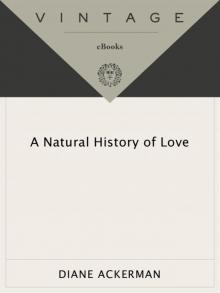 A Natural History of Love
A Natural History of Love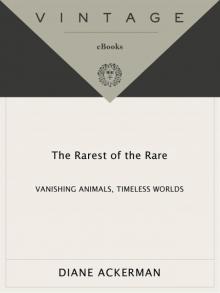 The Rarest of the Rare: Vanishing Animals, Timeless Worlds
The Rarest of the Rare: Vanishing Animals, Timeless Worlds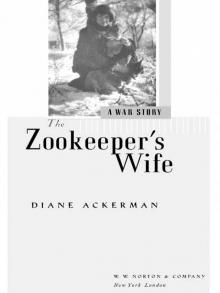 The Zookeeper's Wife: A War Story
The Zookeeper's Wife: A War Story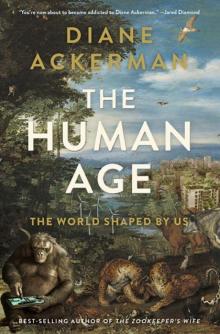 The Human Age: The World Shaped by Us
The Human Age: The World Shaped by Us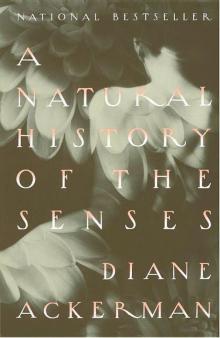 A Natural History of the Senses
A Natural History of the Senses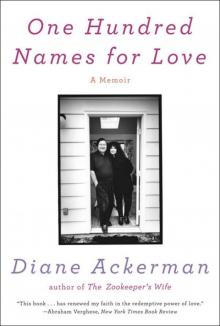 One Hundred Names for Love: A Memoir
One Hundred Names for Love: A Memoir The Rarest of the Rare
The Rarest of the Rare